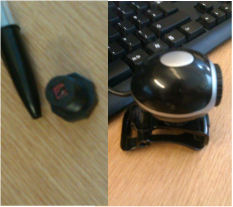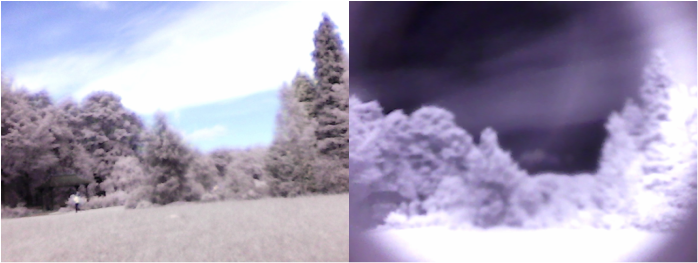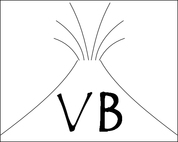 Left - the lens with IR filter. Right - webcam. Left - the lens with IR filter. Right - webcam. A little side project of mine over the past few weeks has been experimenting with the optical properties of very cheap web cameras, this one in particular costing around £6, roughly $10. The average web camera has what is called a CMOS sensor installed which allows detection of light in the wavelengths roughly between 400 and 1000 nm. In practice this means the 'Visible Spectrum' between roughly 400-700 nm and part of the near-infrared spectrum as well. However, installed in most of these cameras is an infrared filter (the slight reddish tint on the picture of the lens). It is relatively simple to remove this filter, unfortunately on this particular camera it is not possible to remove it intact but I didn't want it leftover anyway! After removing this filter, I reassembled the webcam and went to the park just by the geography department. Here I took a 'Full Spectrum' image (left below) and one with a visible light filter (in one specific wavelength - right below). I am sure you can agree the results are very cool! There are a number of things you can use for cheap visible light filters, you may even have one of them lying around the house or in a dusty cupboard somewhere. A very simple option is to use a black bin liner or an exposed camera negative which is as dark as possible. Why not try it yourself, it is very easy to do and takes no time at all. There are many applications of this sort of photography including night vision (generally using a separate infrared light source), looking at absorption of greenhouse gases and general coolness! Comments are closed.
|
Archives
July 2023
|


 RSS Feed
RSS Feed